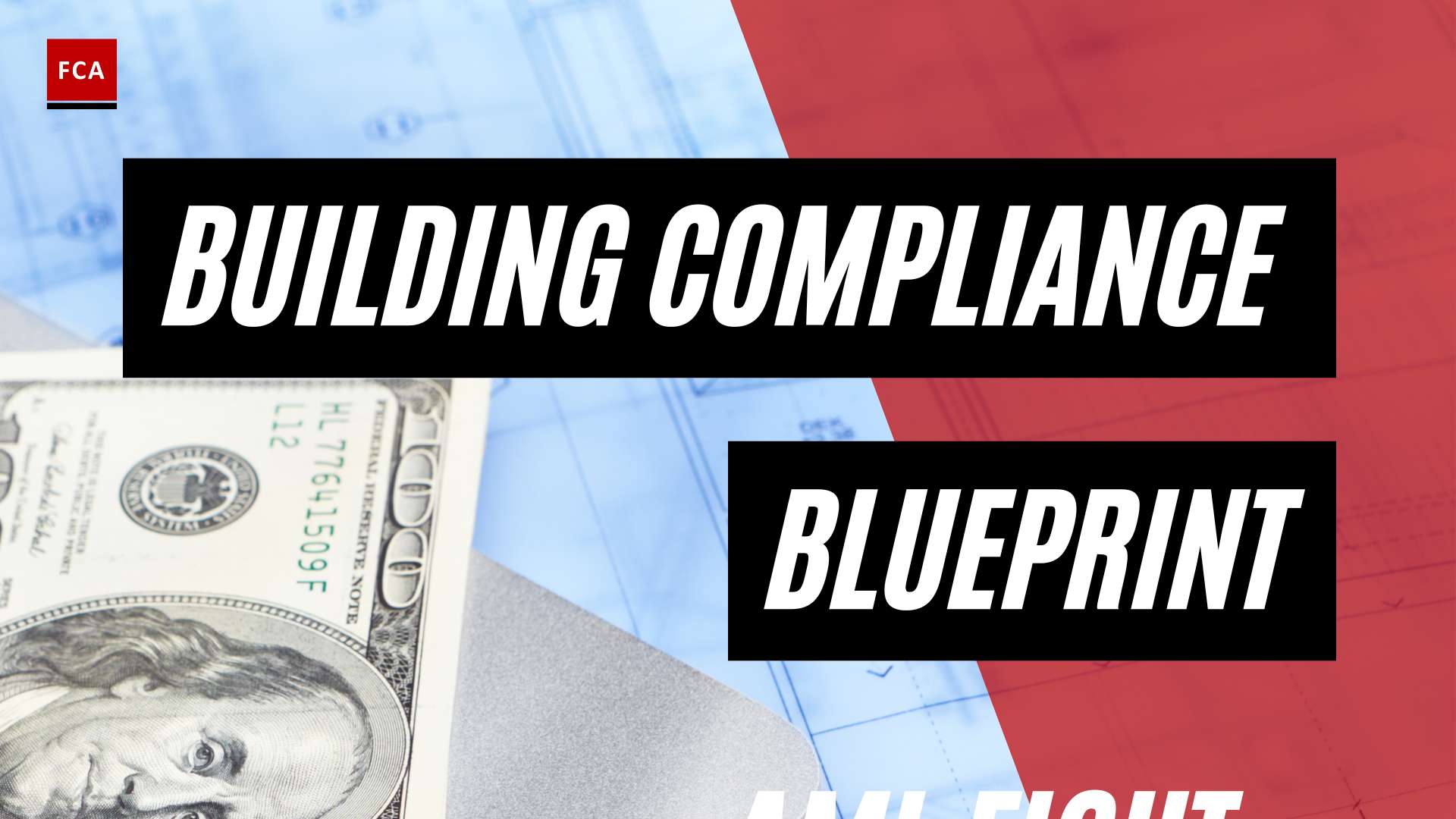Understanding Compliance Reporting Obligations
Compliance reporting is a critical aspect of regulatory compliance, ensuring that organizations meet the requirements set by government and regulatory agencies under specific regulations. Compliance reports serve as documented evidence, providing auditors with proof of an organization’s adherence to these requirements. These reports not only demonstrate compliance but also help identify effective compliance initiatives and areas that need improvement to ensure full compliance (RapidFire Tools).
Importance of Compliance Reports
Compliance reports play a vital role in guiding decision-making processes related to risk management, resource allocation, and additional compliance measures. They provide valuable insights into an organization’s compliance status, highlighting areas of strength and areas that require attention or improvement. By generating compliance reports, organizations can monitor their compliance efforts, assess the effectiveness of control measures, and make informed decisions to enhance their overall compliance posture (RapidFire Tools).
Types of Compliance Reports
Various types of compliance reports exist, each tailored to meet the specific requirements of industry standards or regulations. These reports typically focus on areas such as data security (cybersecurity/IT), financial records, health and safety, payroll, human resources, and management standards. The structure and content of compliance reports vary depending on the applicable regulations and the nature of the organization’s operations (RapidFire Tools).
Here are some common types of compliance reports found across industries:
| Type of Compliance Report | Focus Area |
|---|---|
| Data Security Compliance Report | Assessing the organization’s adherence to cybersecurity standards and protecting sensitive data |
| Financial Records Compliance Report | Demonstrating compliance with financial reporting and record-keeping regulations |
| Health and Safety Compliance Report | Evaluating compliance with occupational health and safety regulations to ensure a safe working environment |
| Payroll Compliance Report | Demonstrating compliance with payroll regulations, including accurate record-keeping and tax obligations |
| Human Resources Compliance Report | Assessing compliance with employment laws, regulations, and policies |
| Management Standards Compliance Report | Demonstrating adherence to specific management standards, such as ISO certifications or industry-specific guidelines |
It’s important to note that compliance reporting obligations vary across industries. Some industries, such as healthcare, banking and finance, and education, are subject to elaborate compliance reporting mandates due to their impact on human lives and sensitive information (RapidFire Tools).
Understanding compliance reporting obligations is essential for organizations to ensure they meet the regulatory requirements specific to their industry. By producing comprehensive and accurate compliance reports, organizations can demonstrate their commitment to compliance, mitigate risks, and maintain the trust of stakeholders.
Compliance Reporting Obligations by Industry
Compliance reporting obligations vary across industries, with each sector having its own set of regulatory requirements. These obligations ensure that organizations operating within these industries adhere to specific standards and guidelines. Understanding the compliance reporting obligations in various sectors is essential for professionals working in compliance, risk management, anti-money laundering, and anti-financial crime.
Healthcare Sector
In the healthcare sector, compliance reporting plays a critical role in protecting patient data, ensuring the quality of patient care, and maintaining the integrity of healthcare systems. Organizations in this sector are subject to regulations such as the Health Insurance Portability and Accountability Act (HIPAA) in the United States and the General Data Protection Regulation (GDPR) in the European Union. These regulations require healthcare organizations to report breaches of patient data, implement security measures to safeguard sensitive information, and comply with privacy and consent requirements.
Banking and Finance Sector
The banking and finance sector is highly regulated to maintain financial stability, prevent money laundering, and combat the financing of terrorism. Financial institutions must comply with anti-money laundering (AML) regulations, reporting suspicious transactions, and implementing robust compliance programs. These reporting obligations help regulatory authorities monitor and prevent illicit financial activities. Institutions may be subject to regulations such as the Bank Secrecy Act (BSA) in the United States and the Financial Action Task Force (FATF) recommendations internationally.
Education Sector
The education sector also has its own compliance reporting obligations. Educational institutions are responsible for protecting student records, ensuring equal opportunity, and maintaining educational standards. Compliance requirements in this sector can include reporting on student data privacy, adherence to federal education laws such as the Family Educational Rights and Privacy Act (FERPA), and compliance with accreditation standards.
Industries such as healthcare, banking and finance, and education are just a few examples of sectors with elaborate compliance reporting mandates. It’s important to note that compliance reporting obligations may vary within each industry, as regulations can be specific to certain sectors or applicable across multiple industries. Understanding the specific reporting requirements relevant to an organization is essential to avoid violations and maintain regulatory compliance.
For more information on regulatory reporting requirements, refer to our article on regulatory reporting requirements.
Consequences of Non-Compliance
Failure to meet regulatory reporting requirements can have significant consequences for organizations, both financially and reputationally. Understanding and adhering to these obligations is essential to avoid the following:
Financial Penalties and Legal Actions
Non-compliance with regulatory reporting obligations can result in substantial financial penalties for businesses. Regulatory violations may lead to fines in the millions of dollars, as seen in cases of severe breaches (Financial Crime Academy). These penalties can have a severe impact on a company’s bottom line and financial stability. For instance, GDPR breaches have resulted in fines of up to 746 million euros ($847 million) (Diligent). Additionally, non-compliance can lead to legal actions, investigations, and potential lawsuits against the organization, further increasing the financial burden and diverting valuable resources (Financial Crime Academy).
Reputational Damage and Loss of Trust
Non-compliance can also have detrimental effects on a company’s reputation. Regulatory actions resulting from non-compliance may tarnish the brand’s image and lead to a loss of customer trust and potential business relationships (Financial Crime Academy). The repercussions of reputational damage can be long-lasting and extend beyond financial losses. Customers and stakeholders may question the organization’s commitment to ethical practices, leading to decreased revenue and difficulties in attracting new business opportunities.
To mitigate the risk of non-compliance, organizations need to prioritize regulatory reporting obligations and develop robust systems and processes to ensure adherence. This includes investing in appropriate regulatory reporting software and implementing regulatory reporting training programs for employees. By proactively addressing compliance requirements and taking corrective actions when necessary, organizations can minimize the potential consequences associated with non-compliance.
It is crucial for businesses to understand the specific regulatory reporting requirements applicable to their industry, such as AML regulatory compliance and AML reporting guidelines. By staying informed and implementing effective compliance measures, organizations can navigate the complex regulatory landscape and maintain their integrity in the marketplace.
Effective Compliance Reporting Strategies
To meet regulatory reporting requirements effectively, organizations can employ various strategies that streamline the compliance reporting process and ensure accuracy. Two key strategies are the use of automation tools for compliance reporting and the streamlining of data collection and analysis.
Automation Tools for Compliance Reporting
Automation tools have become increasingly valuable in helping organizations manage their compliance reporting obligations efficiently. These tools can streamline data collection, analysis, and reporting processes, reducing errors and saving time for the organization. By automating repetitive tasks, such as data entry and report generation, compliance professionals can focus on more strategic activities, such as data analysis and risk assessment.
Implementing automation tools enables organizations to enhance accuracy and timeliness in meeting compliance reporting deadlines. These tools can provide real-time insights into compliance status, generate reports automatically, and facilitate documentation for audits or regulatory reviews. By leveraging automation, organizations can ensure that their compliance reporting processes are efficient, consistent, and compliant with regulatory requirements.
Streamlining Data Collection and Analysis
Streamlining data collection and analysis is another crucial aspect of effective compliance reporting. Organizations should establish robust data collection procedures to ensure that the necessary information is captured accurately and in a timely manner. This may involve implementing standardized data collection templates, utilizing data management systems, and ensuring data integrity through validation and verification processes.
Once the data is collected, organizations can employ various analytical techniques to extract meaningful insights and identify compliance risks. Data analysis tools can help identify patterns, anomalies, and potential red flags that require further investigation. By analyzing data effectively, organizations can proactively address compliance issues, implement risk mitigation strategies, and make informed decisions.
It is important for organizations to regularly review and update their data collection and analysis processes to adapt to changing regulatory requirements and industry best practices. By continuously improving these processes, organizations can ensure the accuracy and reliability of their compliance reporting, ultimately enhancing their overall risk management efforts.
By leveraging automation tools for compliance reporting and streamlining data collection and analysis, organizations can improve the efficiency, accuracy, and effectiveness of their compliance reporting processes. These strategies enable organizations to meet their regulatory reporting obligations while minimizing errors, saving time, and maintaining compliance with applicable regulations.
Compliance Reporting Best Practices
When it comes to compliance reporting, organizations must adhere to specific regulations and prioritize their reporting efforts to ensure transparency and accountability. By following best practices in compliance reporting, businesses can effectively meet their regulatory reporting requirements and mitigate the risk of non-compliance.
Adhering to Specific Regulations
One of the key best practices in compliance reporting is to closely adhere to the specific regulations and standards that apply to your industry. Whether it’s anti-money laundering (AML) regulations, data privacy laws, or financial reporting requirements, understanding and complying with the relevant regulations is essential. This involves staying up-to-date with the latest AML regulatory compliance guidelines and AML reporting guidelines issued by regulatory authorities.
To ensure compliance, organizations should implement robust internal controls, policies, and procedures that align with the regulatory framework. Regularly review and update these controls to reflect any changes in regulations or industry standards. Conducting periodic risk assessments and audits can also help identify any gaps in compliance and provide opportunities for improvement.
Prioritizing Compliance Reporting
Another vital best practice is to prioritize compliance reporting within the organization. Compliance reporting should be seen as a fundamental part of the overall risk management and governance framework. Designate responsible individuals or teams to oversee compliance reporting efforts and ensure they have the necessary expertise and resources to fulfill their responsibilities.
To streamline compliance reporting, leverage regulatory reporting technology and AML reporting software. These tools offer features such as data visualization, automated alerts, audit trails, and centralized documentation, making it easier to collect, monitor, and report on the data required for compliance. Implementing such tools can help businesses reduce risk, improve compliance posture, and make informed decisions based on accurate and timely information.
Furthermore, organizations should provide regulatory reporting training to employees involved in compliance reporting. This training should cover the specific regulations applicable to the organization, reporting requirements, and the importance of accurate and timely reporting. By educating employees on their compliance obligations, organizations can foster a culture of compliance and ensure everyone understands their role in meeting reporting obligations.
By adhering to specific regulations and prioritizing compliance reporting, organizations can establish a robust and effective compliance reporting framework. This not only helps meet regulatory requirements but also reduces the risk of financial penalties, legal actions, and reputational damage. Ultimately, effective compliance reporting contributes to maintaining transparency, trust, and the overall integrity of the organization.
Compliance Reporting and Risk Management
In the realm of regulatory compliance, effective reporting plays a crucial role in managing risk and ensuring adherence to regulations. Tracking adherence to regulations and taking corrective actions are key components of compliance reporting.
Tracking Adherence to Regulations
Implementing effective compliance reporting mechanisms is essential for organizations to prevent non-compliance and mitigate associated risks. Regular reporting helps track adherence to regulations, identify gaps, and take corrective actions promptly to ensure compliance with laws and standards. By closely monitoring and reporting on compliance activities, organizations can identify areas of improvement and address any shortcomings before they escalate into significant compliance issues.
To track adherence to regulations, organizations often establish robust regulatory reporting frameworks that outline the reporting requirements and frequency. These frameworks serve as a guide to ensure that the necessary data and information are collected, analyzed, and reported accurately. Compliance teams utilize various tools, such as AML reporting software, to streamline the reporting process and maintain accurate records.
Taking Corrective Actions
When deviations or non-compliance issues are identified through compliance reporting, taking corrective actions is imperative to rectify the situation and prevent further non-compliance. Corrective actions may include implementing process improvements, providing additional training to employees, or strengthening internal controls to address the root causes of non-compliance.
Promptly addressing non-compliance through corrective actions demonstrates an organization’s commitment to upholding regulatory standards and mitigating risks. It is important to establish a culture of accountability and transparency, where employees at all levels understand the importance of reporting non-compliance and taking necessary corrective actions.
Additionally, organizations should provide ongoing regulatory reporting training to employees involved in compliance reporting processes. This training ensures that they have a comprehensive understanding of reporting obligations and are equipped to identify and address non-compliance effectively.
By tracking adherence to regulations and taking corrective actions, organizations can strengthen their compliance efforts, minimize the risk of non-compliance, and maintain a robust compliance program. Compliance reporting serves as a critical component of overall risk management, enabling organizations to proactively identify and address compliance issues, protect their reputation, and ensure the long-term sustainability of their business.
Compliance Reporting Software Solutions
In today’s ever-evolving regulatory landscape, organizations are faced with complex compliance reporting obligations. To effectively manage these obligations, many businesses are turning to compliance management software solutions. These tools provide a range of benefits, including streamlining workflows, automating processes, and centralizing compliance reporting efforts.
Benefits of Compliance Management Software
Implementing compliance management software brings numerous advantages to organizations navigating the intricacies of regulatory requirements. Here are some key benefits:
-
Automation and Efficiency: Compliance management software helps automate compliance reporting obligations, reducing manual effort and increasing efficiency. These tools streamline workflows, allowing teams to focus on higher-value tasks rather than spending time on manual data collection and report generation (Filestage).
-
Real-time Insights: With compliance management software, organizations gain real-time visibility into their compliance status. These tools provide dashboards and analytics that offer valuable insights, making it easier for businesses to track their progress and address any compliance gaps promptly.
-
Enhanced Data Security: Compliance management software often includes robust data security features, ensuring the safe storage and protection of sensitive compliance-related information. This helps organizations meet data privacy requirements, such as those outlined in AML regulations, while minimizing the risk of data breaches (Filestage).
-
Proactive Compliance: By centralizing compliance reporting efforts, compliance management software enables organizations to take a proactive approach to compliance. It helps organizations stay ahead of regulatory changes, ensuring that they are always up to date with the latest requirements and reducing the risk of non-compliance.
Centralizing Compliance Reporting Efforts
One of the key functions of compliance management software is the centralization of compliance reporting efforts. These tools provide a unified platform where organizations can consolidate compliance data, documents, and reports.
By centralizing compliance reporting, businesses can:
- Standardize reporting processes and templates across the organization, ensuring consistency and accuracy.
- Improve collaboration and communication between teams involved in compliance reporting, reducing the risk of miscommunication or duplication of efforts.
- Maintain a comprehensive audit trail, allowing for easier tracking and documentation of compliance-related activities.
- Facilitate easy access to compliance reports and documentation during audits or regulatory reviews.
Centralizing compliance reporting efforts with the help of compliance management software enables organizations to streamline their processes, reduce the chances of errors or omissions, and enhance overall risk management (Filestage).
In the realm of AML regulatory compliance, where reporting requirements play a crucial role, the use of compliance management software can significantly improve an organization’s adherence to regulatory guidelines. These tools offer features such as data visualization, automated alerts, audit trails, and centralized documentation, enabling businesses to stay on top of their AML regulatory reporting obligations (ClickUp).
By leveraging compliance reporting software solutions, organizations can navigate the complexities of compliance reporting, reduce risk, and ensure they meet their regulatory obligations with greater ease and efficiency.








